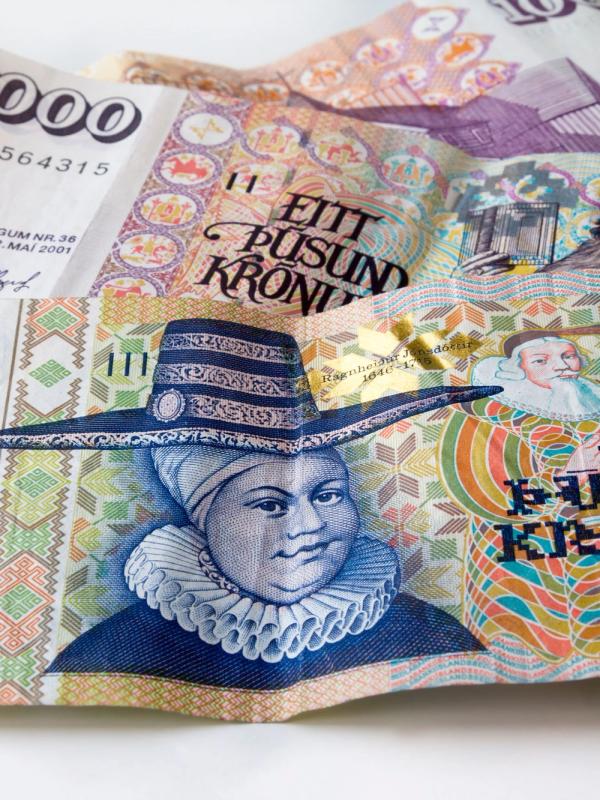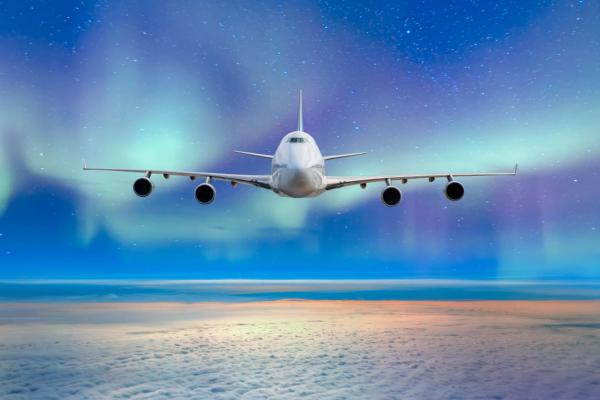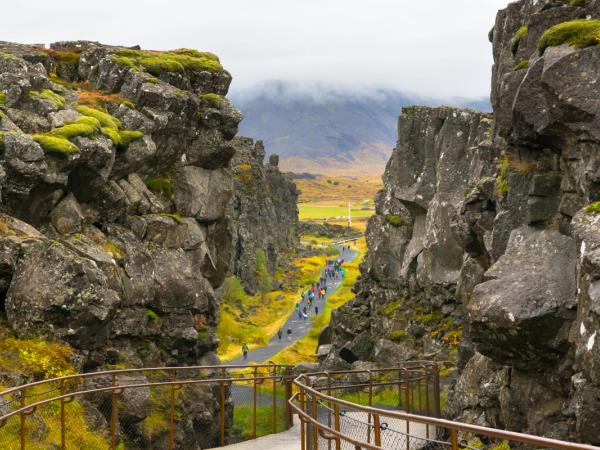
What's the Cost of a Trip to Iceland?
Traveling and discovering a new place is one of the best experiences there are. Seeing something spectacular for the first time is a sensational feeling. For that reason, Iceland has become one of the best destinations in the world. The number of things that seem from another world is so high that not many places can compete with this Nordic country in that sense.
However, when we are planning a trip, one of the most important things we consider is our budget. We all want to have the best time of our lives at the minimum cost possible. Most of us are not lucky enough to travel without caring about the money we’re spending.
In that sense, Iceland is not a cheap country. Basic items and services here are more expensive than in many other countries. Iceland needs to import a lot of the things the country uses, which increases the prices. It’s important to know how much you’ll be spending on your Icelandic adventure. But that doesn’t mean you can’t have a relatively cheap trip to Iceland. With careful planning and being smart, you can save up a lot.
In this detailed guide, we'll cover everything from flights and accommodation to food, gas, and entrance fees, breaking down costs in Icelandic Krona (ISK), US Dollars (USD), and Euros (EUR).
Key takeaways
- Iceland is an expensive country. The standard of living is high, and that is reflected in the prices.
- Eating out and drinking can be surprisingly pricey, but there are options for all budgets.
- Some attractions have an entrance fee, but most of the best things Iceland has are free.
Plane Tickets to Iceland
The price of a plane ticket to Iceland can vary greatly based on factors like your departure point, time of year, and how far in advance you book. Summer (June to August) is the peak season in Iceland. The days are long, the weather is mild, and there are many festivals and events. Plane tickets are usually more expensive during this period.
Flights from North America
If you’re flying from a major city in North America, such as New York, Boston, or Toronto, a round-trip flight in the off-season (September to May) can cost between $500 and $1,200 or €470 to €1,130. If you're traveling during the summer high season, prices can jump to roughly $600 to $1,500 or €560 to €1,400. It's advisable to book flights as early as possible to get the best deals, especially during the busy months.
Flights from Europe
Flights from Europe are typically shorter and less expensive than from North America. In the off-season, a round-trip flight from some of the main European cities, such as London, Paris, or Berlin, is usually between about €200 and €900 or $220 to $1,000. Peak season tickets are much more expensive, going up to around €900. Again, timing and flexibility in your travel dates are key to securing lower fares.

Cost of Accommodation in Iceland
This is where the variety of prices and options is wider. The cost of staying in Iceland greatly depends on the accommodation type, location, and season. Prices, like with plane tickets, are higher during the summer, especially in places like Reykjavik or near main tourist attractions.
However, you’ll find a range of options suitable for different budgets, from high-end hotels to camping sites.
Hotels
Hotels are still the preferred and most common form of accommodation but are also the priciest. During peak season, a double room in a mid-range hotel can cost around ISK 24,000 to ISK 75,000 per night (approximately $177 to $535 or €160 to €500).
You might find better deals in the off-season, with prices starting at ISK 14,000 (about $100 or €90).
Apartments
Renting an apartment or a room through sites such as Airbnb is often a more affordable option. An entire apartment can cost between ISK 30,000 and ISK 47,000 (about $220 to $400 or €200 to €370) per night. This is a great option for families or groups, as you can also save on food by cooking your own meals.
Hostels
Hostels are a popular choice for solo travelers, young people, or those on a budget. There are different types of hostels, with a wide range of prices, but in summer, expect to pay around ISK 5,500 to ISK 20,000 (around $40 to $145 or €35 to €130) per night. Off-season prices can drop to as low as ISK 3,500 (about $25 or €22). Keep in mind that hostels in Iceland are often cleaner and quieter than those in other parts of Europe, so they provide good value for the money.
Camping Sites
Camping is not only, by far, the cheapest way of accommodation but also a great option if you’re doing a multi-day hike or exploring the wilderness for several days. Campsites are available all across Iceland and typically charge between ISK 1,400 and ISK 13,000 (about $10 to $93 or €9 to €85) per night, depending if you’re staying in a tent, a cabin, or a hut.
Bear in mind that camping in winter is not the best idea due to harsh weather conditions, and many campsites close during that season.
Rural Accommodations
If you prefer to stay away from the hustle of Reykjavik or other cities, you can stay in a rural guesthouse or farm. Prices range from ISK 14,000 to ISK 28,000 per night (roughly $100 to $200 or €90 to €180). These accommodations often include breakfast and provide a closer look at Icelandic culture.
How Much Does Eating in Iceland Cost?
Food in Iceland is notoriously expensive. Many visitors are surprised to discover how much a dinner for two can cost. However, there are ways to save money.
Restaurants and Cafes
Going out for dinner in Iceland can cost between ISK 3,900 and ISK 12,000 ($28 to $85 or €25 to €80) per meal at mid-range restaurants. Fine dining establishments in Reykjavik can cost even more, with some meals costing over ISK 15,000 (around $105 or €100). There are also cheaper options, like Iceland's famous hot dogs, that cost about ISK 850 (roughly $6 or €5.50).
Grocery Shopping
One of the best ways to reduce your food expenses is shopping in a grocery store -Bonus or Kronan have good prices – and preparing your own meals. This is especially advisable if you’re staying in an apartment or house with access to the kitchen. Basic groceries for a day, including bread, pasta, cheese, and fruit, will cost around ISK 2,000 to ISK 4,000 ($15 to $30 or €14 to €28). Many accommodations, including campsites and hostels, provide kitchen facilities for guests.
Drinking
This is one of the things that usually surprises tourists the most. Alcohol is highly taxed in Iceland, and a simple beer can cost from ISK 1,000 to ISK 1,500 (about $7 to $10 or €6 to €9) at a bar. Grocery shopping, beer can only be bought in State-own stores, but they’re still much more affordable than in restaurants. The cheapest beer you can find is Martens Ultra, which costs around $1.6 (€1.5).
Renting a Car
The best way to explore Iceland is by car. Renting a vehicle will allow you to go anywhere you want at your pace, allowing you to plan your activities to maximize your trip. There’s a wide range of cars and prices that you can choose from.
You can rent a good car for as little as 6704 ISK per day ($49 or €45). Depending on the type of car you want to rent, you have many options.
If you’re traveling in winter or are planning to explore the Highlands—which can only be done in summer—a 4x4 car is highly recommended. Prices for these cars start at just 7,724 ISK per day ($57 or €52). There’s a wide range of cars in this category with many different prices, depending on the extras you want to be included, like GPS or Wi-Fi.
Gas prices in Iceland
Apart from the renting costs, another important thing to consider is the gas prices in Iceland. Gasoline and diesel prices in Iceland are some of the highest in Europe. This is due to several factors, including high taxes, fuel importation costs, and environmental policies to reduce carbon emissions. Iceland is heavily reliant on fuel imports, as the country has no domestic fossil fuel resources.
In general, prices are more or less uniform throughout the whole country. Gasoline averages around ISK 300 per liter ($2.20 or €1.97). For a typical road trip around the Ring Road, you can expect to spend ISK 21,000 to ISK 42,000 (approximately $150 to $300 or €130 to €280) on gas, depending on the type of vehicle and the length of your trip.
Entrance to Attractions
While much of Iceland’s natural beauty is free to explore, some attractions charge entrance fees. Most of the geothermal spas, such as the Blue Lagoon or the Forest Lagoon, have an entrance fee. Hot springs and similar attractions, although worth it in most cases, are not cheap either. For example, the most basic Blue Lagoon ticket costs $73 (€68). Cheaper, but equally stunning places like the Forest Lagoon cost 6,900 ISK (45€ or 50$).
Free Attractions
One of the best things about Iceland is that many of its amazing attractions are free to enjoy. You can see the most amazing waterfalls in the world, walk along an astonishing black sand beach, or see chunks of blue ice floating on a lake for free.
- Waterfalls: Famous waterfalls like Gullfoss, Seljalandsfoss, and Skógafoss are all accessible for free. Seeing any of these waterfalls, and many others, from up close is a fantastic experience.
- National Parks: There are three national parks in Iceland: Þingvellir, Vatnajökull, and Snæfellsjökull. They are all different and all worth a visit. They are a collection of natural wonders, and they are all free to visit. Some parks charge small fees for parking.
- Beaches and Geothermal Areas: Iconic sites like Reynisfjara Black Sand Beach and Fjaðrárgljúfur Canyon are freely accessible and offer incredible photo opportunities. Natural geothermal areas like Geysir and Hverir—known for their steaming fumaroles and bubbling mud pools—are also available to explore for free.
Focusing on free attractions can significantly reduce the cost of your trip while still allowing you to experience some of Iceland's most iconic locations.
Tips to Reduce Your Budget
We know that Iceland can be an expensive destination, but there are several ways to travel smart and keep your budget under control without sacrificing your experience.
Travel in the off-season
Peak season in Iceland goes from June to August, and prices for everything, from flights to accommodation, are the highest during these months. Consider visiting in the shoulder seasons of April-May or September-October. The weather will still be relatively mild, and there will be fewer crowds.
Book early
One of the best ways to get the best deals on flights, car rental, or accommodation is to book early. Iceland is a popular tourist destination, and prices can increase quickly as the dates approach, particularly in summer. If you’re planning on doing activities, such as whale-watching tours or glacier guided visits, also book in advance. The price would probably be the same, but this way, you’ll ensure you have room.
Rent a car
Public transportation in Iceland is limited outside the major cities. On the other hand, renting a car allows you to visit more remote locations and follow your own itinerary.
Cook Your Own Meals
Eating out can be one of the most expensive aspects of your trip, especially if you stick to restaurants. If you have access to a kitchen in the place you’re staying in, cooking your meals can be one of the best ways to reduce the cost of your trip. Many hostels and Airbnb accommodations have kitchen facilities.
Visit the Free Attractions
As mentioned earlier, most of the best things to see and do in Iceland are completely free. This country is like a museum outdoors, and there are plenty of options to enjoy the best of Iceland’s natural beauty without spending a dime. Whether it’s hiking to a waterfall, visiting a geothermal area, or exploring a black sand beach, Iceland offers plenty of no-cost activities.
Stay in Hostels or Campsites
If you're traveling during the warmer months, consider staying at campsites, where fees per night are low. Camping in Iceland during the summer is not only affordable but also allows you to stay close to nature. Alternatively, hostels provide budget accommodations ranging from ISK 3,500 to ISK 20,000 ($25 to $145 or €22 to €130), offering basic amenities and the chance to meet fellow travelers.
Conclusion
It’s true that Iceland is a relatively expensive country, especially compared to other destinations. Basic things here are not cheap at all. The cost of living for locals is elevated, but so are our salaries and our standard of living. For this reason, many visitors are often surprised by the prices of some things that are much cheaper in their countries of origin.
This impacts the prices of food, accommodation, and transport. However, as we have seen, there are many options to make your trip much cheaper while enjoying your Icelandic experience to the fullest.









